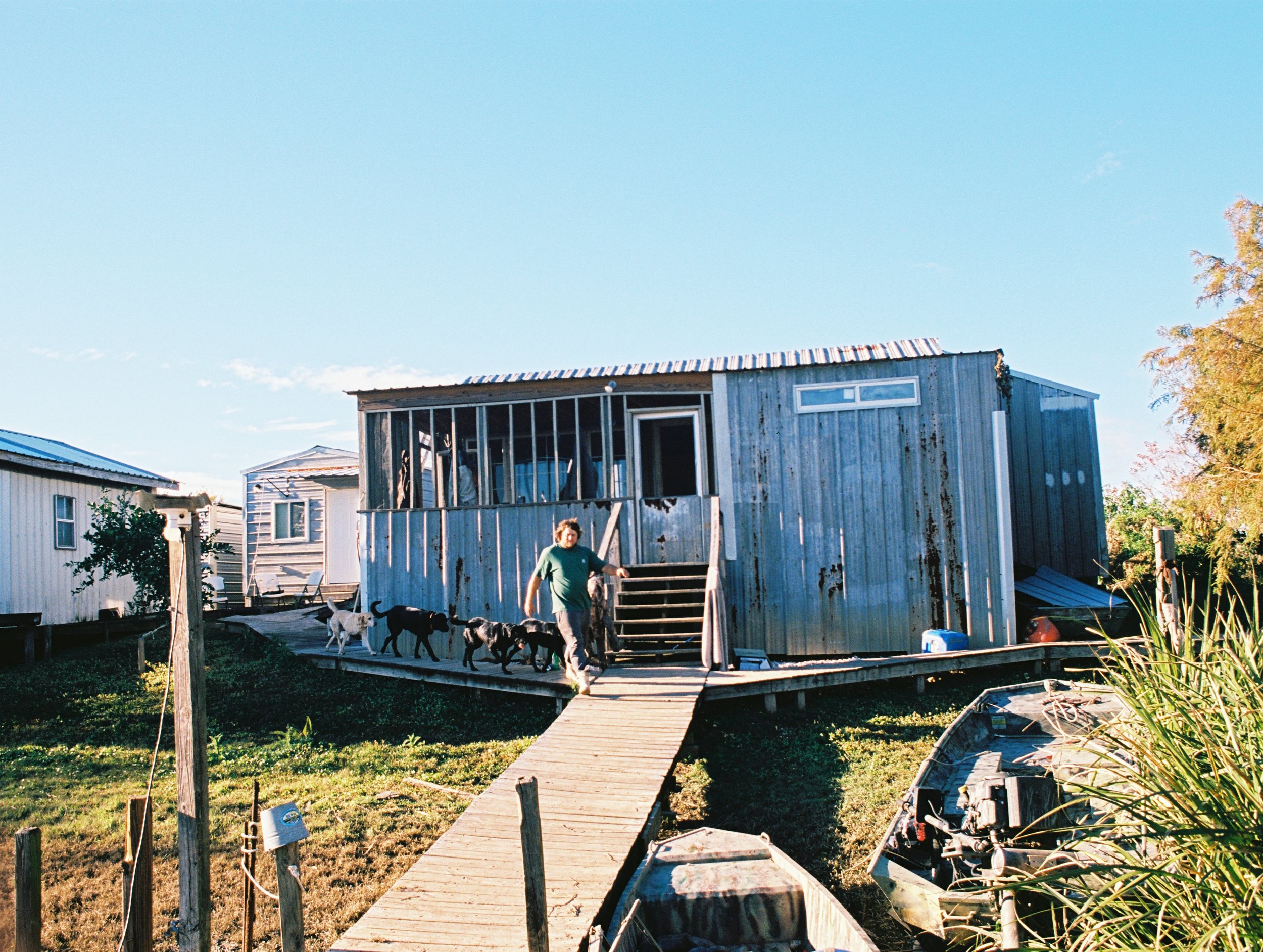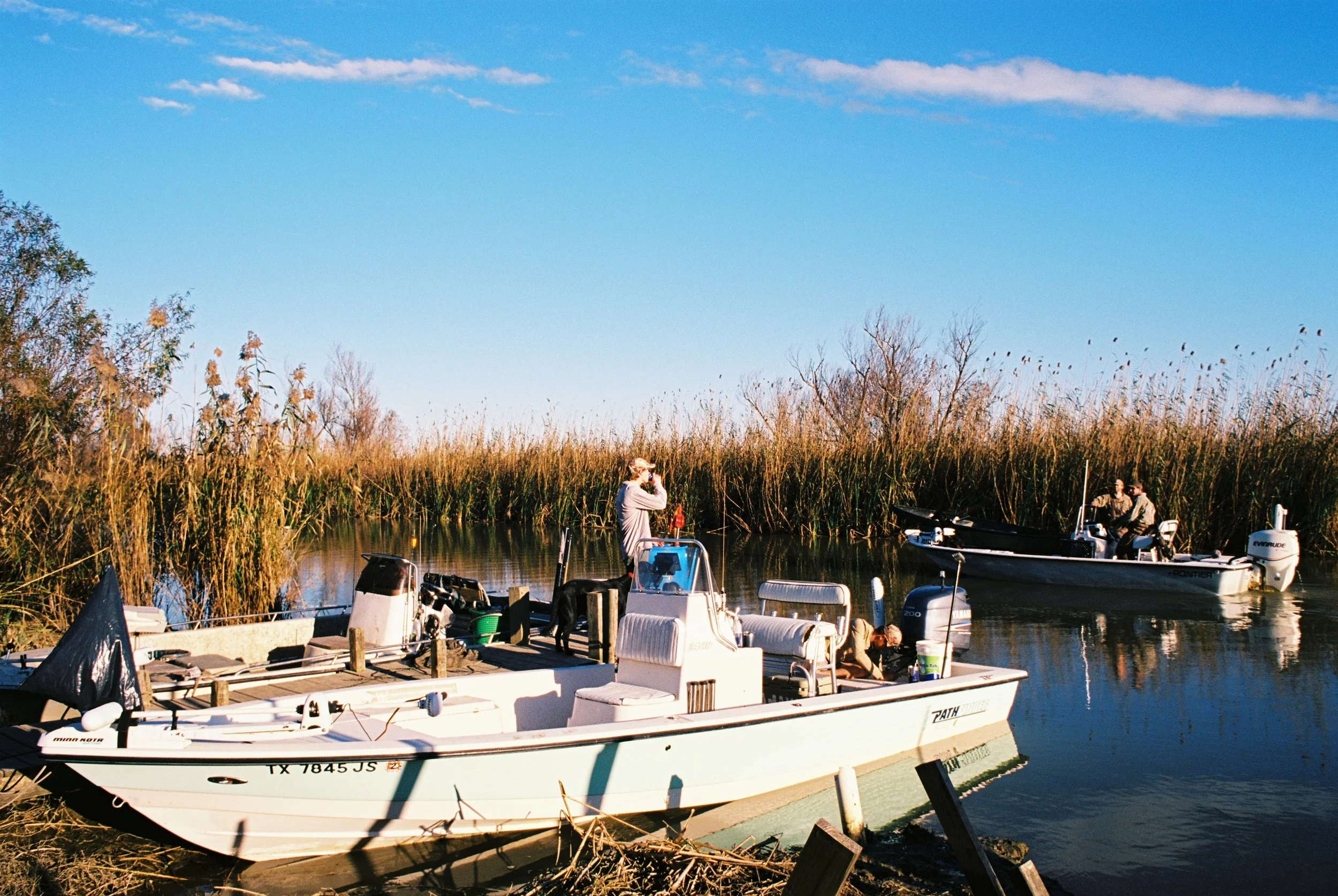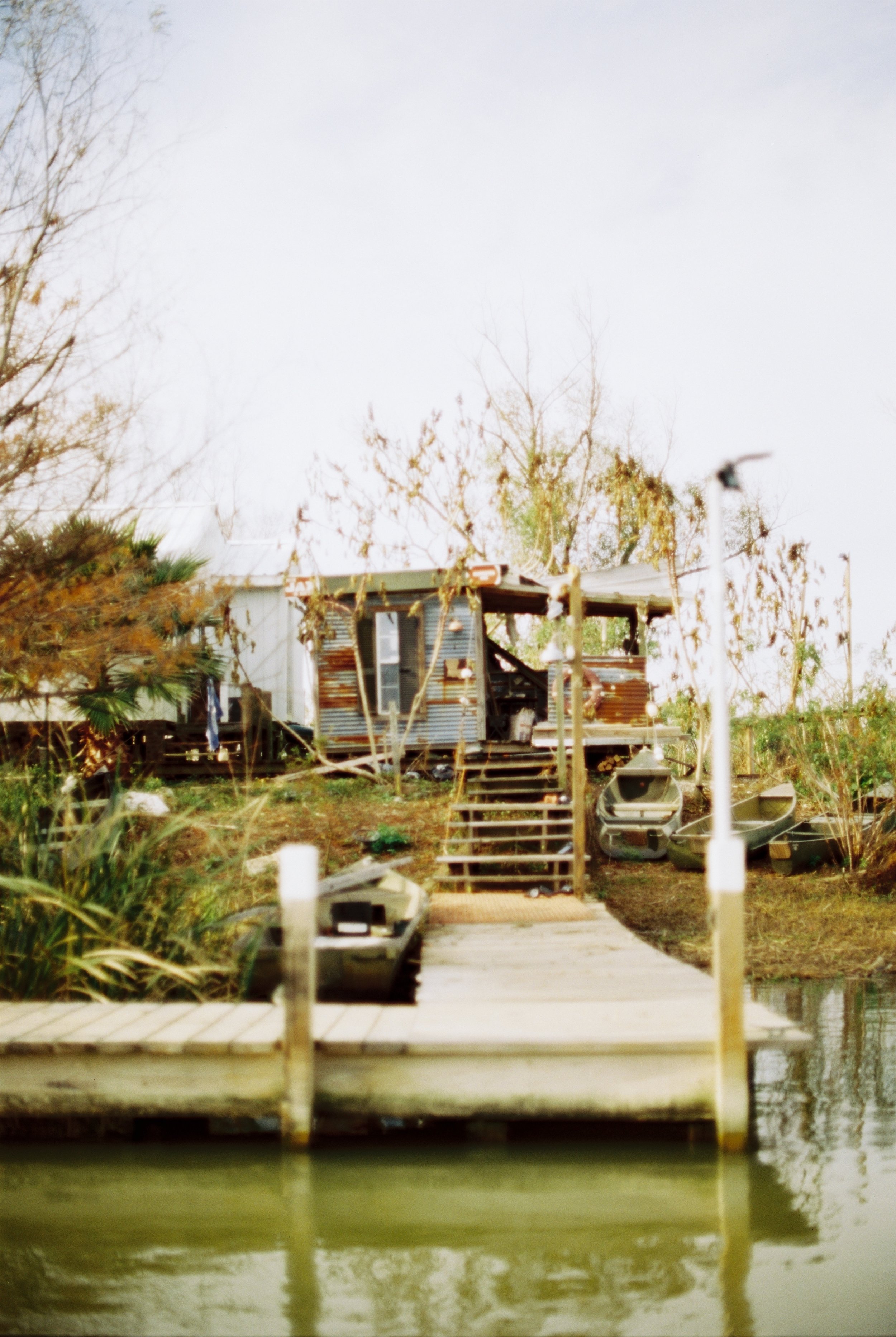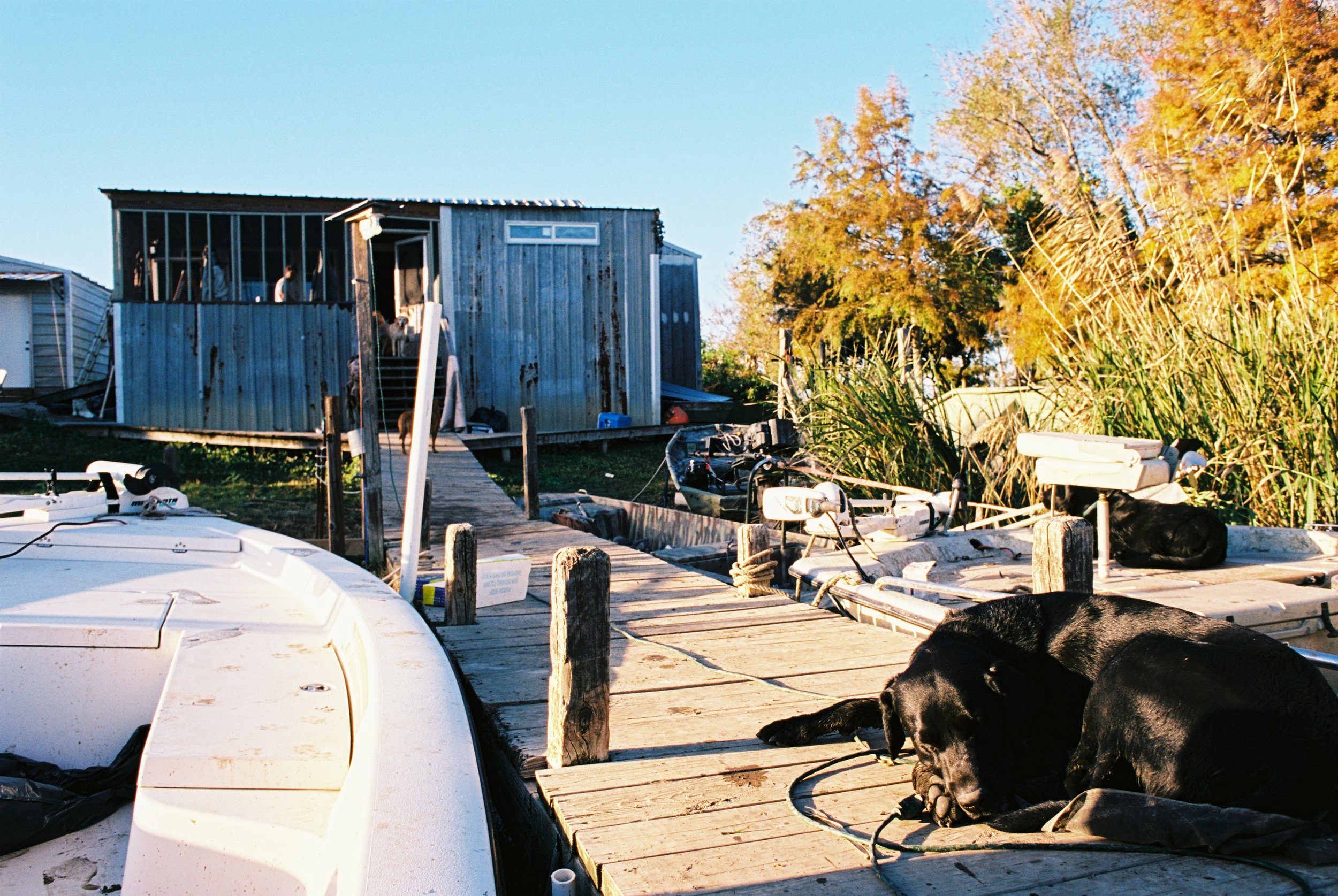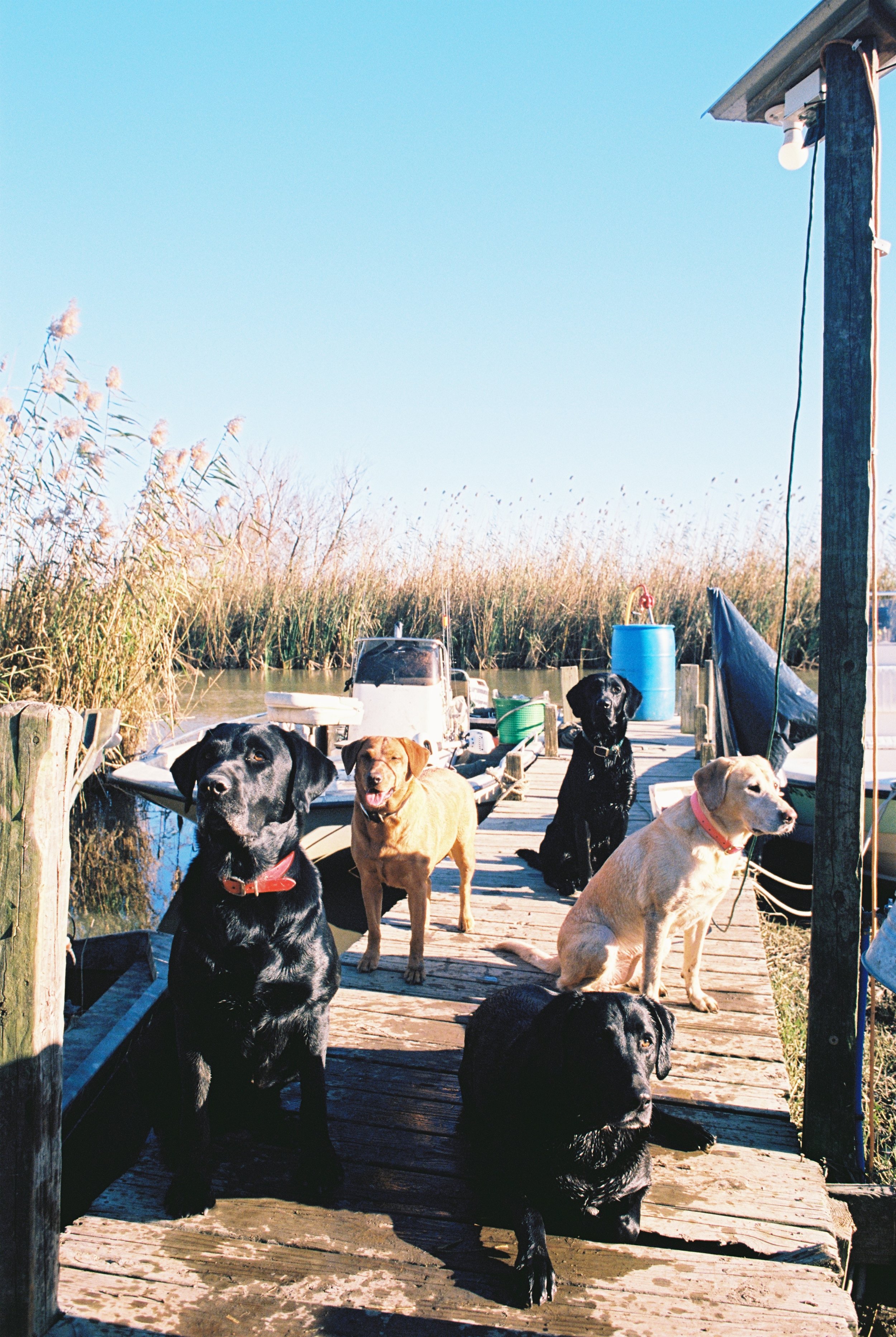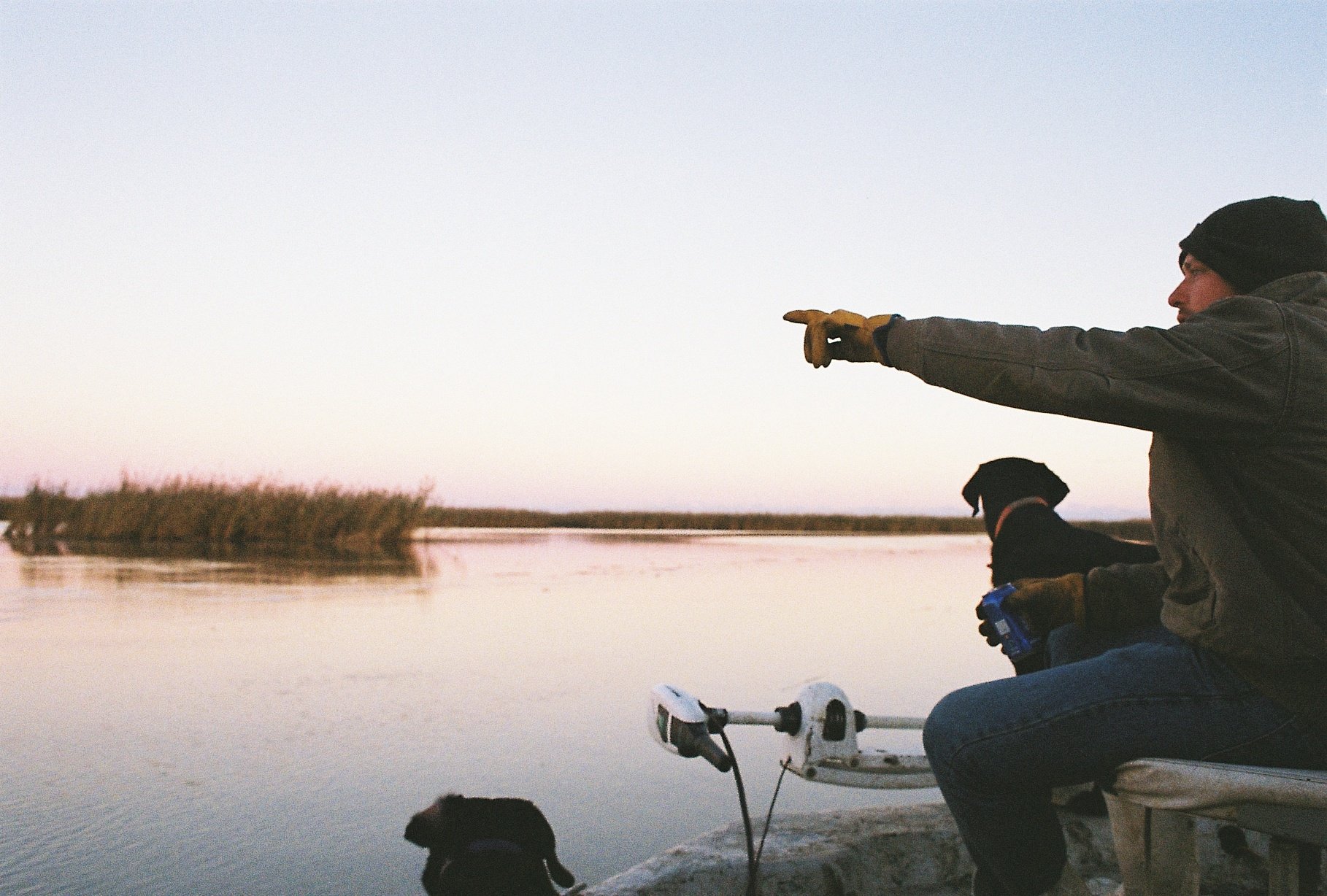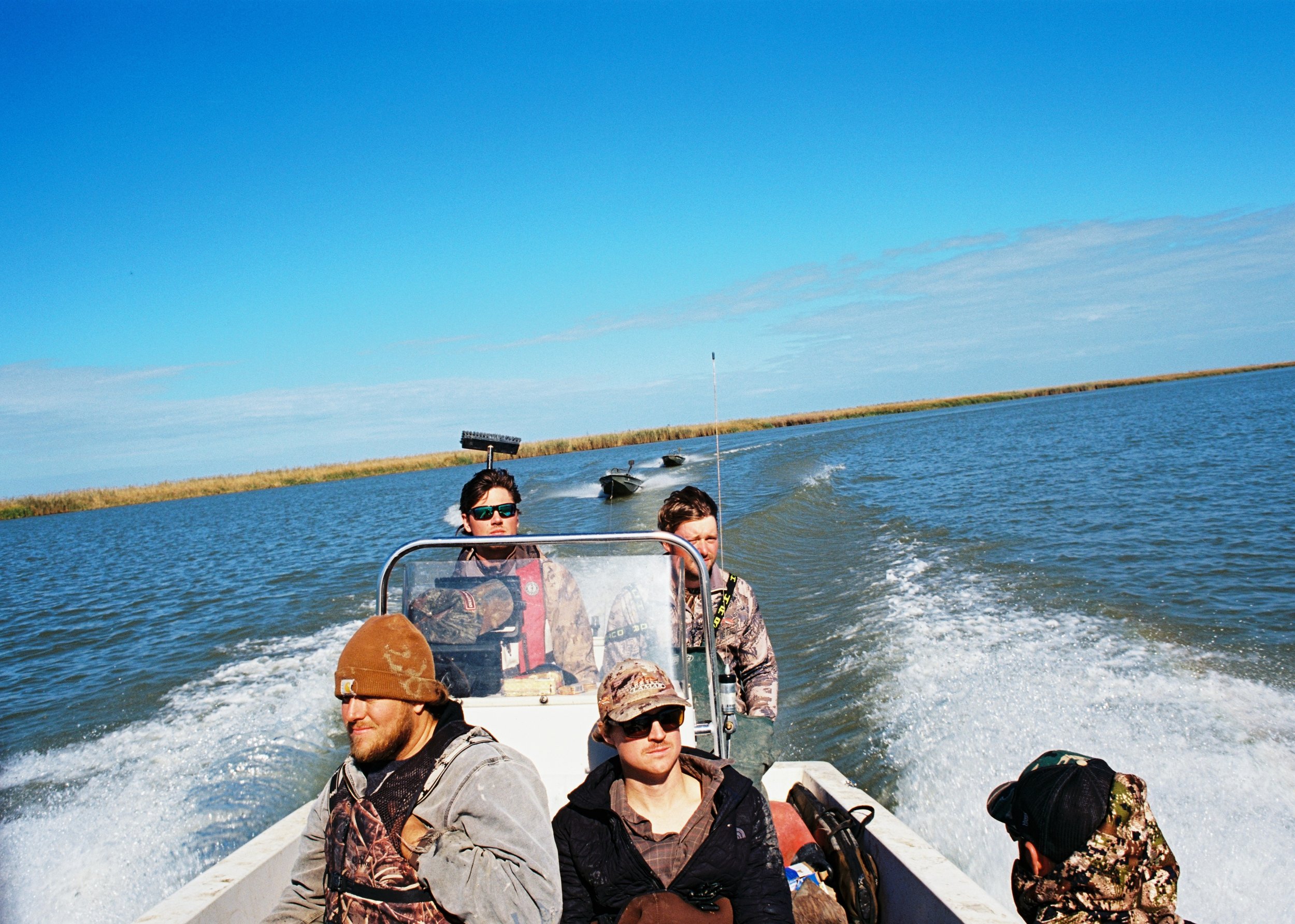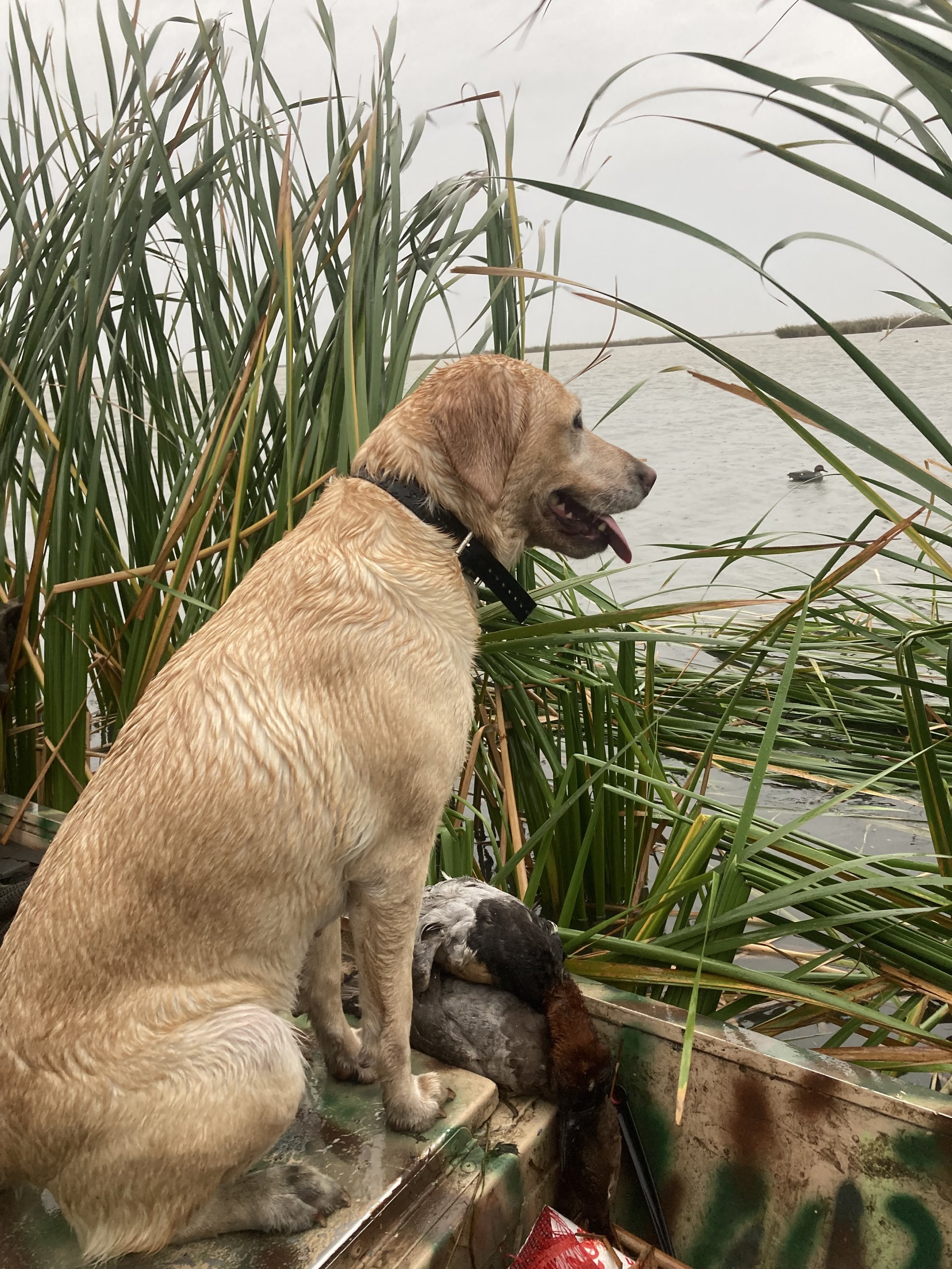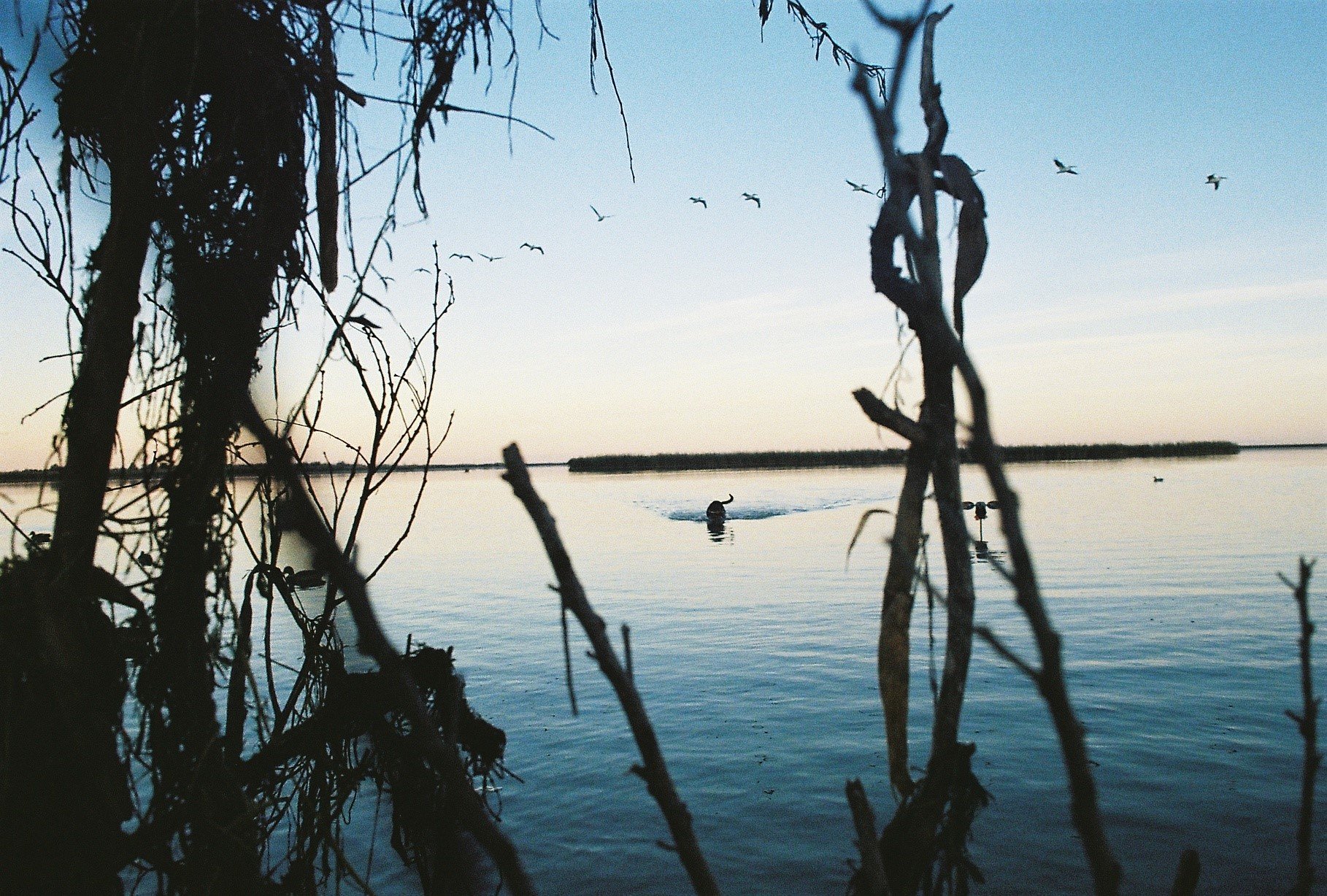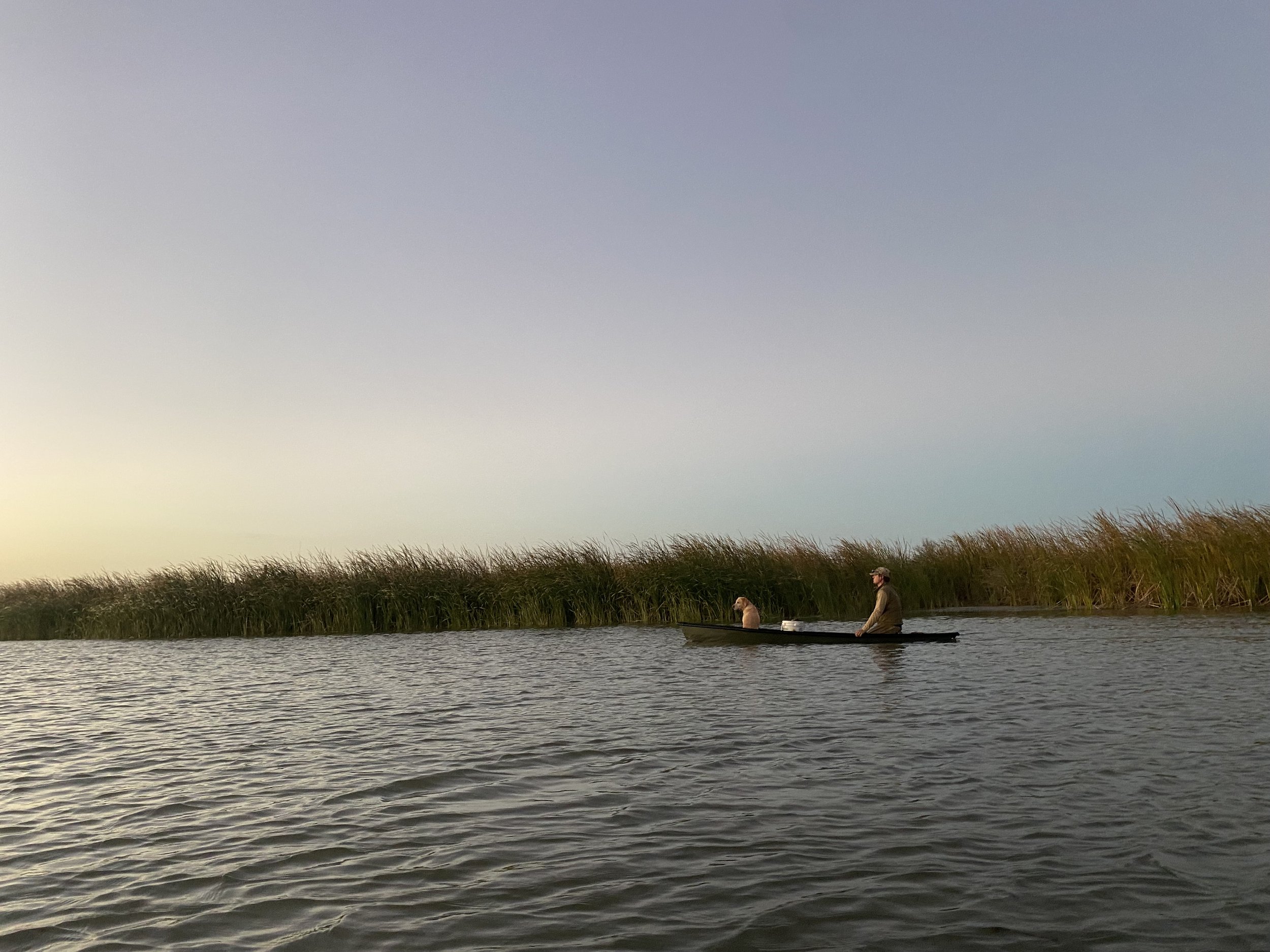Trip Reports: Vol. 4, by Guest Author: Ryan Gary
There’s no easy way to get to the small corrugated tin camp at the end of the Mississippi River, but this trip I made it particularly hard on myself. Sixteen hours of driving, Baltimore to Mobile, to pick up my friend Broom. I crashed at his place, and in the morning, we left for camp stopping for the necessities along the way. “If there’s not a single box of number two steel shot off of I-10 from here to New Orleans there’s a bigger issue going on”, said in confidence within the first fifteen minutes of the drive. There was apparently a much bigger issue going on. Doubling down on groceries and beer is the only way to smooth over showing up to a five day duck hunting trip with a single box of shotgun shells.
The road trip ended in Venice, Louisiana, mostly because there was no more road to drive on. The last leg to camp was South Louisiana’s version of a backpacking trip: gas-powered, pack-it-in, pack-it-out. It’s an eleven-mile boat ride from the ramp to the canal just after the Head of Passes, where the river breaks into a delta, a sketchy course to charter even in favorable conditions. It had been five years since my last trip downriver, but I was greeted at camp just as every other time: a variety of yells, screams and waving arms behind the screened in porch as we idled down the canal to the dock. Arriving at a set up camp on the cusp of a weeklong trip is the confluence of optimism and exuberance, where nostalgia lives.
The tin camp is situated on top of an L-shaped levee only a couple hundred yards from the Gulf of Mexico. It’s one of two dozen camps, stacked close enough together that you can toss your neighbor a beer if they’re sitting on the front porch. I’ve never gotten the full story of how one stumbles into the upkeep or owning of one of these camps, but I do know if you look at satellite imagery of the canal, they started showing up sometime between 1998 and 2006. Our camp an old houseboat that Hurricane Katrina pushed up on to the levee. You’d only know if someone pointed out the fiberglass floors or you went to grab the pirogues from underneath and saw the aluminum pontoon logs that used to float it.
The camp entrance is on the starboard side, facing the canal. Inside is one main room. Sleeping arrangements three bunkbeds and a couch, just enough for the seven guys and five dogs this week. The door on the right is the bathroom and shower, on the bow. The stern is dedicated to conversation and consumption. A white folding table surrounded by old chairs, where you procrastinate the morning hunt or eat dinner off of paper plates. A small table along the back wall for phone chargers, coffee makers and whiskey. The necessities. Cabinets, a stove, and a sink line the port-side wall under a window where you can watch Grey Ducks pile in to the pond behind the levee while you’re doing the dishes. I’ve been assured the juice is not worth the squeeze.
The hunting over the next few days was what I’ve come to expect of this part of the country: we’d work for them, but there would be opportunities. There’s never a shortage of teal, but they don’t decoy like the Grey Ducks or Pintails. The first two mornings would be filled with the teal birds and a handful of Do Gris (what anyone south of I-10 calls a Scaup). Enough to scratch my itch and give the dogs work, but after three days of below freezing temperatures it was disappointing to the boys who had been hunting out of the tin camp for close to two decades.
A lull always starts talk about how ducks just don’t come down to South Louisiana anymore. “Before Katrina the sky would be black with ducks, every single pond that we’d check would be full after a front like this”, something I hear almost every trip to the tin camp.
Chris, who spends the most time there, ran me up one of his canals on the afternoon of the third day to a pond called Bally’s Grey Duck Hole. Named after his all but retired yellow lab. On the way out, there were unfamiliar gaps in the Roseau Cane on the left and right. In some places, it ended abruptly, in ways I didn’t remember from previous trips. It had been years, but I was almost certain there should have been cane there to define those shallow edges of the canals before you could turn. Without natural channel markers, experience is what kept you from sticking a boat in the mud.
On the fourth day, a front was in the forecast: not cold but a windy, rainy, nasty front - the type of front that excites a true duck hunter, adamant on conquering the elements. But after three days of average hunts and four nights of exceptional consumption and conversation at the white folding table, I wouldn’t put myself in that category.
Chris led the charge that morning with Joe, a new arrival determined to hunt at least once, and Broom, the Mobile product I picked up. Still relatively green in the field of duck hunting, Broom was not going to give the ducks a day off. With no evidence this hunt would be more exceptional than the previous, I was content to sleep in. When that happens though, the hunting is always good.
Those three would have one of my favorite types of mornings. Shootin ‘em in the slop, workin for ‘em, type-two fun. Not bad when you come back with a haul of Grey Ducks, Pintail and teal to a hot breakfast either. Broom certainly deserved it. A Venice Burner.
The rest of the camp energized by their limit of ducks set off to chase the same results in the afternoon. Emulating success we’d had in similar conditions, the goal was one last hunt scratching together every eligible gun left at the camp. A party hunt. Two boats placed nose to nose in a patch of Roseau Cane with two sacks of decoys in 45 degree angles going away from the boats. The same sloppy conditions as this morning persisting.
First came rolling groups of teal and Dos Gris on the edge of a 12 gauge’s range, not sold on committing to decoys in a 20 mph cross wind. We had enough of them anyway this week, no one mounted a gun. Interspersed were small, high groups of Grey Ducks, equally unsatisfied with the crosswind. “Not looking good Bob”. Just before the sky reached the moment of dimness when someone is provoked to question the remaining shooting time, big ducks rolled through the spread. A volley, then falling ducks. “Were those Canvasbacks??” comes from the other boat. For the next twenty minutes, we had our shot at the King of Ducks trying to find a home before sunset.
The five days we spent at the corrugated tin camp wouldn’t be defined by limits of ducks, but by the exercise of chasing ducks, and it’s always that way here. The canal off of Pass a Loutre is one of the few places I travel in the pursuit of game where success is judged by a different metric. It’s never the pile of birds or the ice to fish ratio in the cooler, although we do make a point to brag when either are favorable. Here, it’s about playing the game in a place that feels like you’re out on the edge of the world. The only reminders that there’s anything but duck hunting are the tanker ships going upriver and the helicopters flying out to the oil rigs. Over those five days we played the game, with dogs named Rouge, Art, Gin, Grass and Ace. Hunting out of pirogues and towing bateaus across the marsh in rain and wind. Rewarded with enough pretty ducks to be content with a long boat ride upriver and return to pavement.
If you’ve made it this far, please enjoy a coupon code for 15% off bait shop gear. DOSGRIS23

